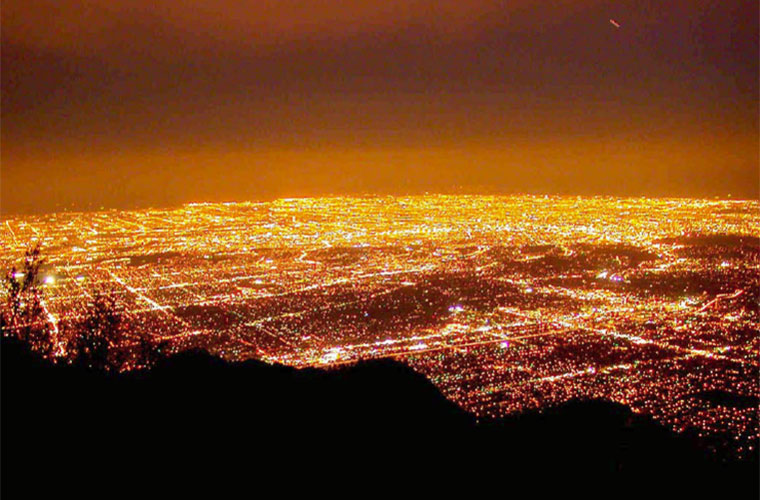The emotionally-charged debate over light pollution continues. The typical scenario pits environmentalists worried about wildlife and the diminishing view of stars at night, against municipalities trying to balance the need for public safety and sympathizing with dark sky advocates. Add in the homeowner who complains to city hall about the streetlight beaming into his bedroom and another worried about break-ins, and you’ve got the conundrum of cross purposes. The lighting distributor is often in the middle.
“The lighting industry is being compared to the tobacco industry,” said Mark Rea, Ph.D. a researcher at Lighting Research Center (LRC) in Troy, New York. “So this is definitely a topic that needs conversation. A dispassionate, balanced view is really what’s needed. It would be a breath of fresh air in an otherwise collection of highly charged monologs.”
Much of the polarization stems from lack of knowledge. Rea points out that “there’s a lot of people who don’t know much about lighting and a lot of who don’t know a lot about sea turtles.”
Sea turtles, whose hatchlings, according to the International Dark Sky Association, (IDA) confuse illuminated roads for the moonlit sea, and are killed by the thousands on coastal highways. The sea turtle has become the de facto standard bearer for all wildlife, even vegetation, that environmentalists say becomes disoriented by artificial light at night. It can never be whittled down to just one endangered animal, or one type of lighting however, the key to bridging the gap between the legitimate concerns on both sides of this argument lies in specificity. “Context is critical; there are no sea turtles in the Hudson River,” said Rea.
Rea and his colleagues at the LRC have extensive experience in this regard. Ten years ago their research, “Outdoor site-lighting performance: A comprehensive and quantitative framework for assessing light pollution” was published in Sage Journals.
Outdoor Site-Lighting Performance or OSP is a comprehensive method for predicting and measuring three different aspects of light pollution: glow, trespass and glare. Recommendations on limiting those three factors were part of the take-away from that research.
Municipalities also often look to the Model Lighting Ordinance (MLO) which also calls for mitigating those three factors. Developed between the International Dark-Sky Association and the Illuminating Engineering Society of North America, the MLO addresses “the need for strong, consistent outdoor lighting regulation in North America. The MLO encourages communities to adopt comprehensive outdoor lighting ordinances without devoting extensive staff time and resources to their development.”
Rea might assert however, that achieving an optimum balance between the need for safety and consideration for the environment does take staff time on both sides of the debate to come up with site specific, workable solutions. This creates a vital role for those in the lighting industry.
“If we’re going to make a change, we’re not going to lead by current standards based upon light fixtures, you’re going to lead by the people who can balance community application concerns,” said Rea. While he acknowledges that most lighting professionals know this, it never hurts to repeat two fundamentals for applications: distribution and levels.
“First, don’t put light where it shouldn’t be going. Second, many of our parking lots are over lighted. We have research to justify reducing to lower levels. When you take high pressure sodium and put it in an LED and you follow the standards, the application will be too bright because the light meter isn’t telling you what the eye sees. So if you’re replacing sodium with LEDs you can cut your recommended illumination in half and you’ll find that people are still satisfied.”
The LRC has been asked by the “International Journal of Environmental Research and Public Health” to produce a special issue in 2019 on the topic of outdoor lighting and how to bridge the gap between the environmental concerns and the need for public safety. It’s important to point out that these two sides need not be ideologically divided. Most people in the industry care about light pollution and dark sky advocates care about safe driving at night.
“You have to feel like it’s a solvable problem,” said Rea. “I think we can actually do something in every community and that should give everybody hope, whether you’re a utility or a dark sky advocate, the fact that there are answers to this.”
(In Part II of this report on Sky Glow, we’ll find out what national distributor is doing to to advance the dialogue on reducing light pollution.)
Tagged with lightED, sky glow